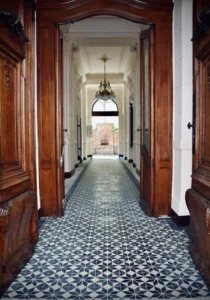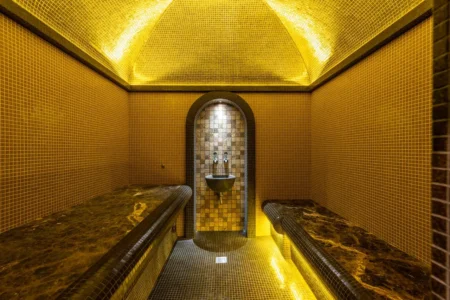The type of tile you pick for your shower is one of the most important choices you’ll make when planning your bathroom. The overall look and practicality of your bathroom may be greatly influenced by the color and design of your shower tiles. White tiles are a common option among homeowners. But should your shower be tiled with white? This post will go through the advantages, factors to think about, and inventive shower design ideas that use white tiles.
The Benefits of White Tiles for Your Shower
Before we delve into the specifics of using white tiles in your shower, let’s take a moment to appreciate the general benefits they offer.
- White tiles offer a classic and adaptable aesthetic appeal. Almost any bathroom décor, from contemporary and minimalist to classic and exquisite, may be complemented by them. White tiles may give your bathroom a stylish, well-maintained appeal thanks to their sharp hue and clean lines.
- White tiles are renowned for their capacity to provide the impression that a room is bigger and brighter. This is especially helpful for smaller bathrooms because it might be difficult to give them a feeling of spaciousness. White tiles’ reflecting qualities improve both ambient and artificial lighting in the space, creating a more open and airy feel.
- White is a versatile neutral hue that complements practically every other color. As a result, you may alter the accent colors in your bathroom without worrying about them clashing with the tiles. White tiles are the ideal backdrop for any color scheme, whether you favor bright, dramatic colours or delicate, pastel tones.
- Contrary to popular belief, white tiles are rather simple to keep clean. Because dirt and stains are readily apparent, you can deal with them before they become a problem. Additionally, a wide range of cleaning supplies made exclusively for white surfaces are readily accessible.
- White will always be in style despite changing trends. When you choose white tiles for your shower, you’re making an investment in a style that will endure both in terms of appearance and toughness.
Now that we’ve covered the benefits, let’s move on to how to choose the right white tile for your shower.
How to Choose the Right White Tile for Your Shower
Choosing the best white tile for your shower is more than simply selecting a hue. You must also examine the material, size, shape, and finish of the tile. Here are some items to consider when you make your decision:
- Tiles are available in a variety of materials, including ceramic, porcelain, glass, and natural stone. Each material has advantages and disadvantages. Ceramic and porcelain tiles, for example, are long-lasting, water-resistant, and relatively simple to maintain, making them perfect for use in showers. Natural stone tiles, on the other hand, such as marble, provide a distinctive and luxury appeal but require more upkeep.
- Size and form: The size and form of your tiles may have a big influence on the overall design of your bathroom. Smaller tiles may provide texture and character to a small shower, while larger tiles might make it look larger. Similarly, the form of your tiles can provide a variety of effects. Rectangular subway tiles, for example, may give your shower a traditional and clean appearance, whilst hexagonal or arabesque tiles can provide a sense of individuality and luxury.
- Tiles are available in a variety of finishes, including glossy, matte, and textured. Glossy tiles reflect light, making your shower look larger and brighter. They may, however, reveal wet marks and fingerprints more easily. Matte tiles, on the other hand, have a more subtle, modern appearance and are less likely to reveal smudges and stains.
- Color of Grout: The color of your grout may have a significant impact on the aesthetic of your shower. utilizing white grout with white tiles creates a smooth, homogeneous aesthetic, but utilizing a contrasting grout color draws attention to the form and pattern of your tiles.
- Finally, do not skimp on the quality of your tiles. High-quality tiles will be more durable, less prone to cracking or chipping, and will keep their color and polish for a longer period of time.
Let’s look at how you may add color and contrast to your white tile shower now that you’ve found the right white tiles.
How to Add Some Color and Contrast to Your White Tile Shower
While the simplicity of a white tile shower can be its charm, adding some color and contrast can elevate your bathroom’s aesthetic and make it more personalized and vibrant. Here are some creative ways to introduce color into your white tile shower:
- Using colored accent tiles is a simple way to inject some life into a white tile shower. One strip, a border, or a whole accent wall are all viable options. Shower accent tiles let you express your individuality via color, pattern, and material choice.
- As was previously said, the appearance of your shower may be greatly affected by the grout color you choose. If your shower is all white tiles, you may create contrast and visual appeal by using colored grout. Showers with dark grout might seem sleek and contemporary, while those with pastel grout can feel light and airy.
- You may also use the bathroom’s accessories as a method to inject some color into the space. Consider items like as stall liners, bath mats, and soap dishes. These components are simple to swap out, letting you update the look of your bathroom whenever you choose.
- Plants: Plants not only brighten up your otherwise boring white tile shower, but they also refresh and relax you. Pick flora that does well in damp environments, such ferns, orchids, or even aloe vera.
- The importance of lighting cannot be overstated. If you have white tiles in your bathroom, installing colored LED lights may make them seem completely different depending on the time of day.
Keep in mind that you want to highlight, not compete with, the elegance of your white tiles. Make sure that any color or contrast components you pick work well with your white tiles rather than competing with them.
Conclusion
The benefits of using white tiles in your shower are numerous. They have a classic look, make a room seem larger, can be used in a variety of different ways, and are simple to maintain. The trick to a well-designed white tile shower, however, is in the tile selection and use of color and contrast.
Frequently Asked Questions (FAQs)
Are white bathroom tiles a good idea?
What color tile is best for bathroom shower?
Are white shower tiles hard to keep clean?
What kind of tile is best for a shower?
Tiles that are long-lasting, impervious to water, and simple to wipe down are ideal for a shower. Because of its longevity and resistance to moisture, ceramic and porcelain tiles are frequently used. To provide a more opulent effect, natural stone tiles such as marble or slate might be utilized. Your bathroom’s design goals should inform your tile selection.



